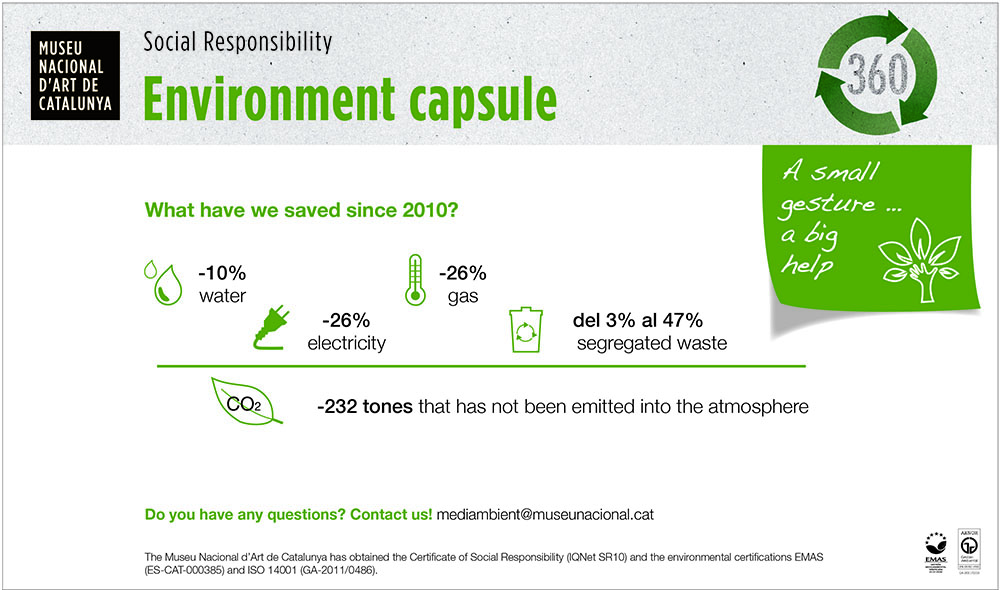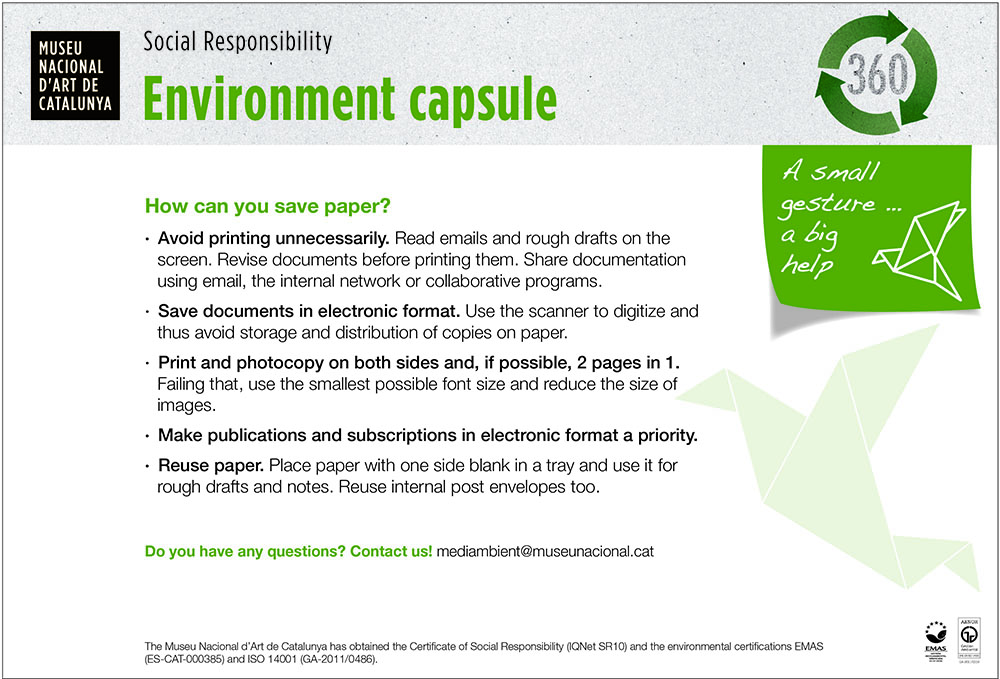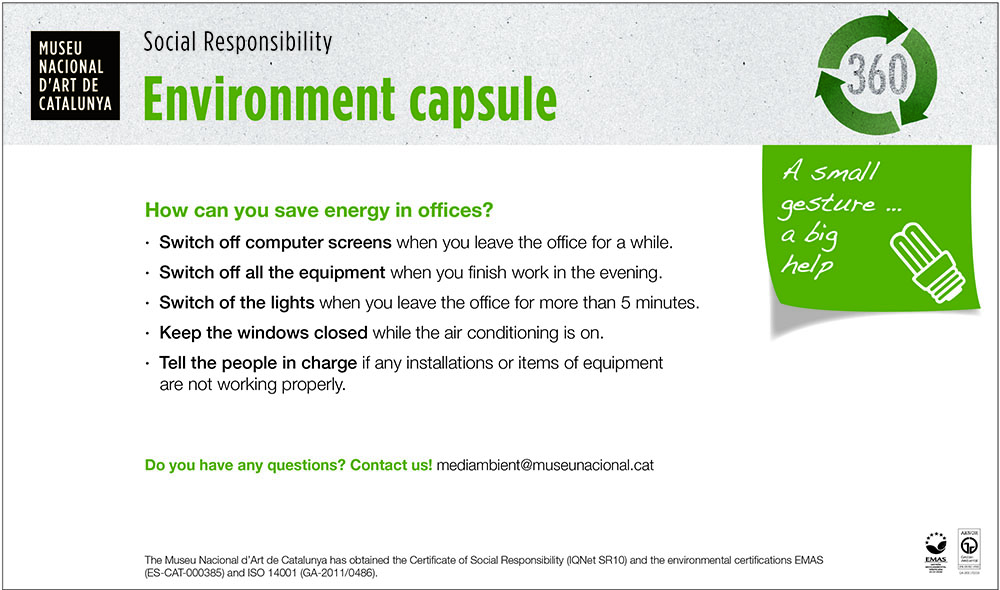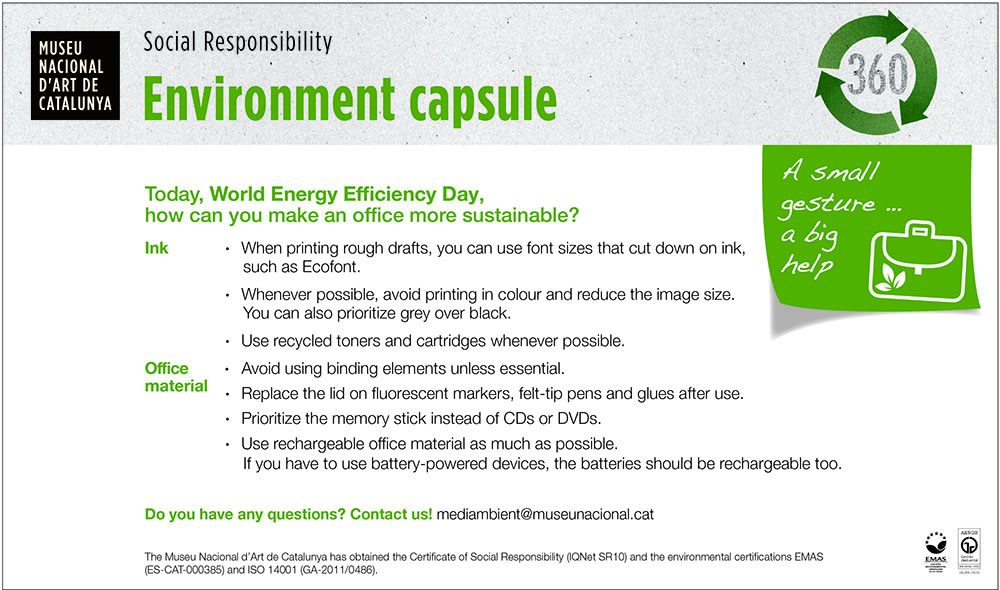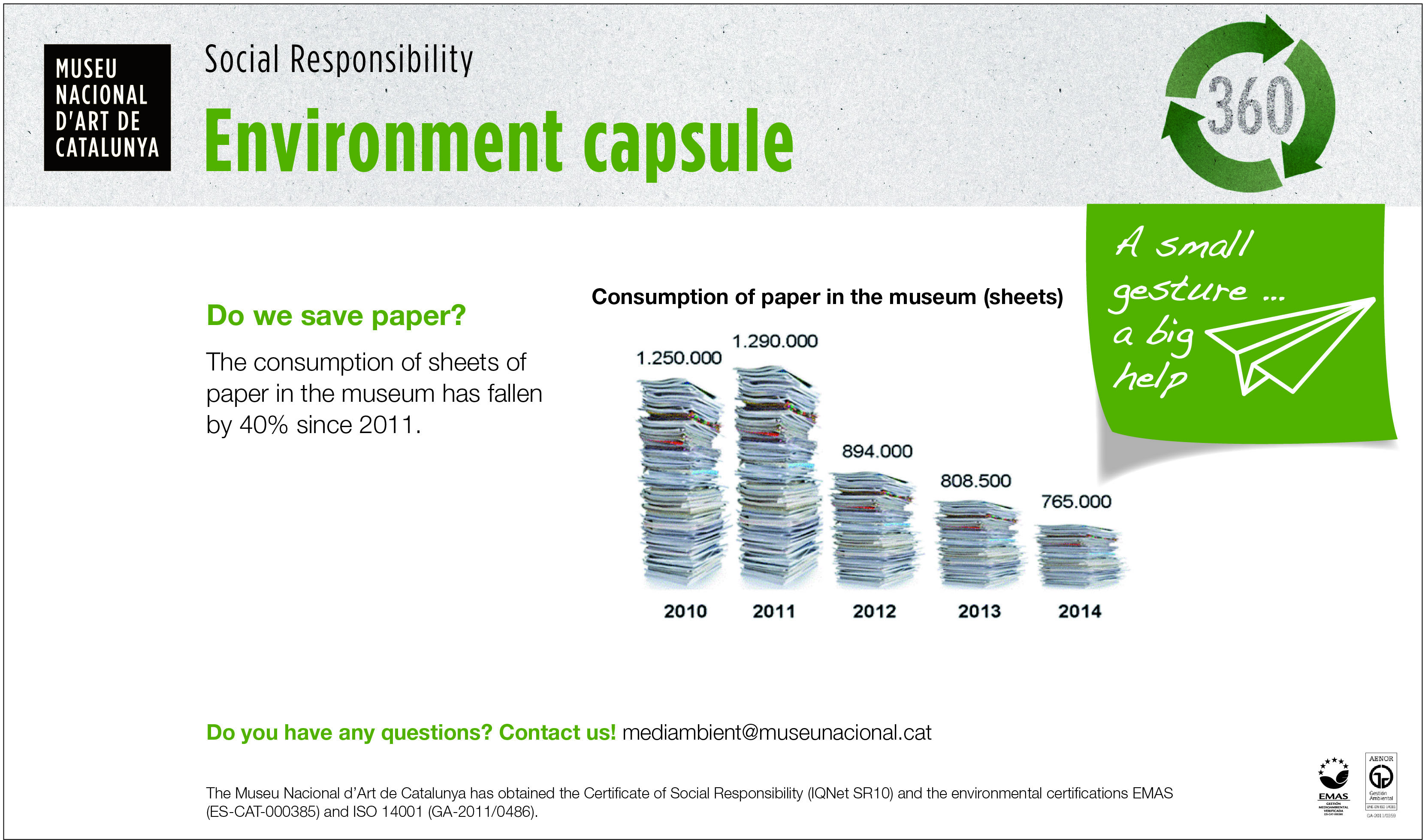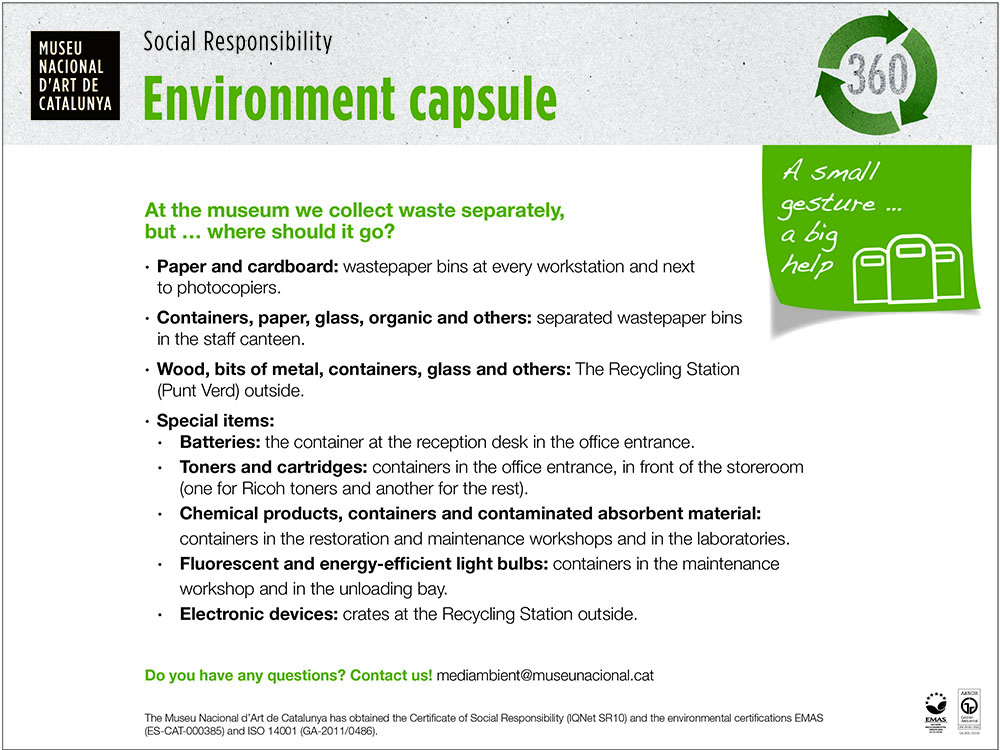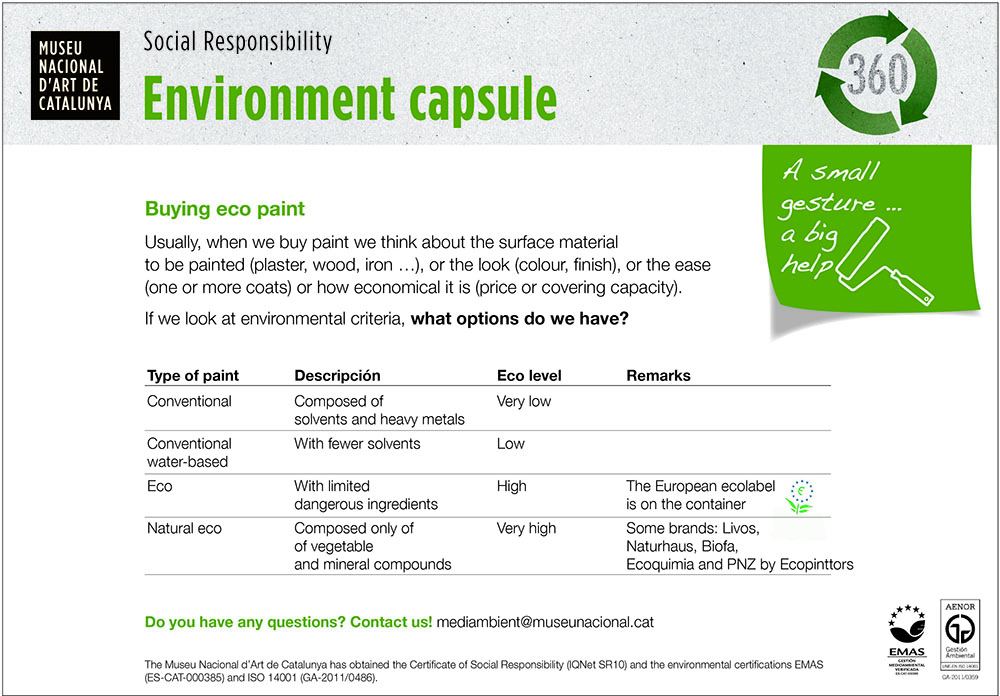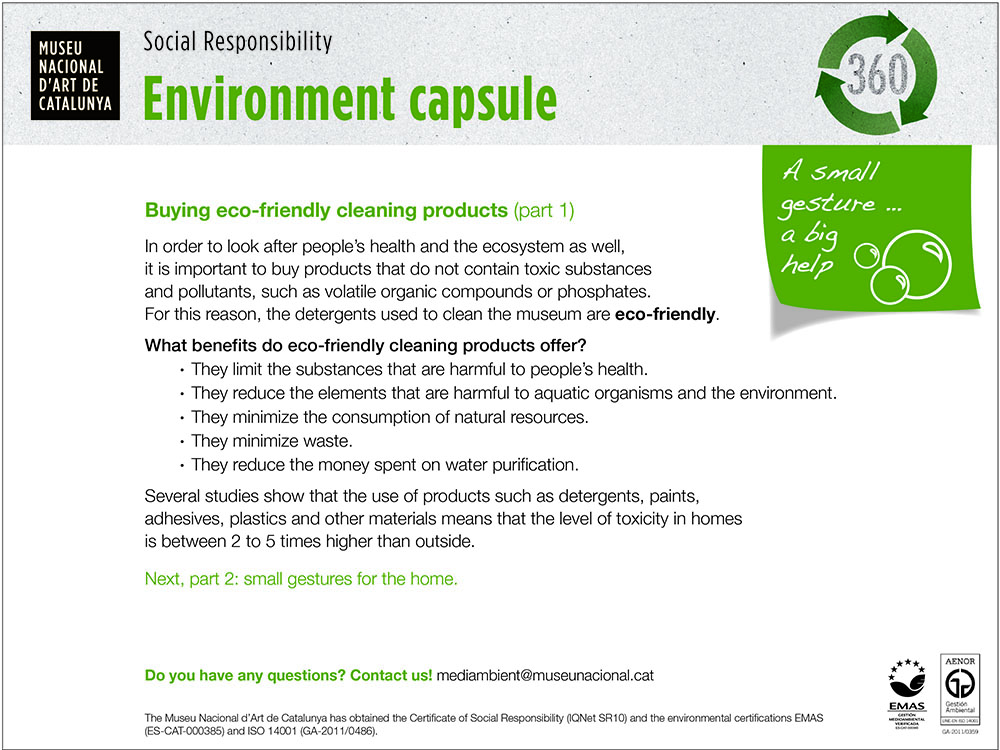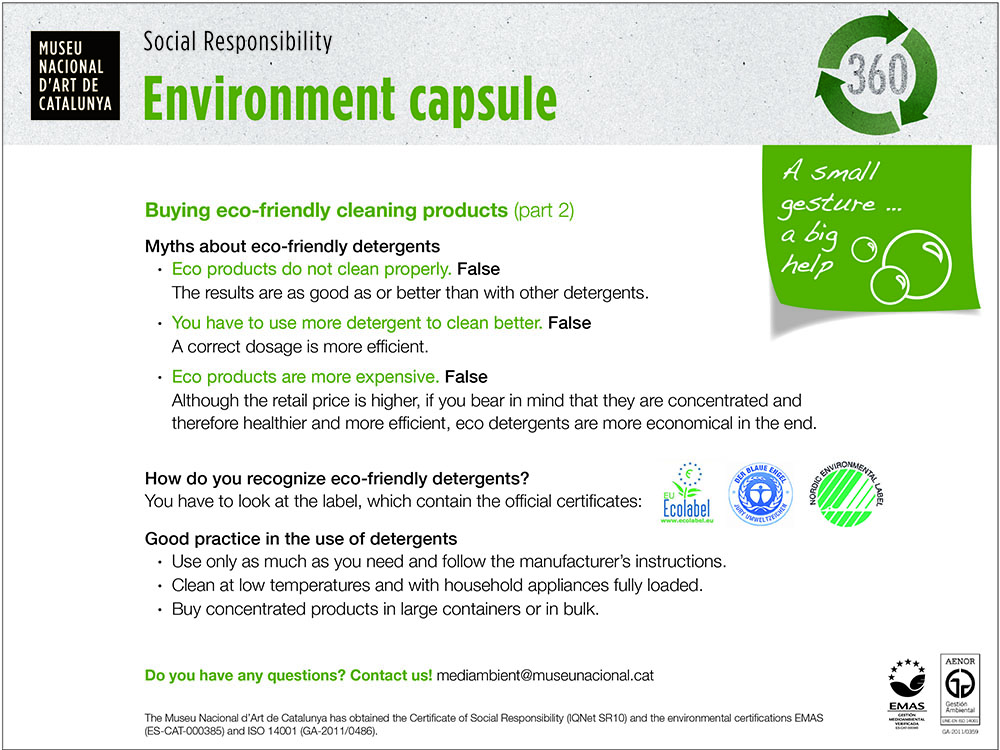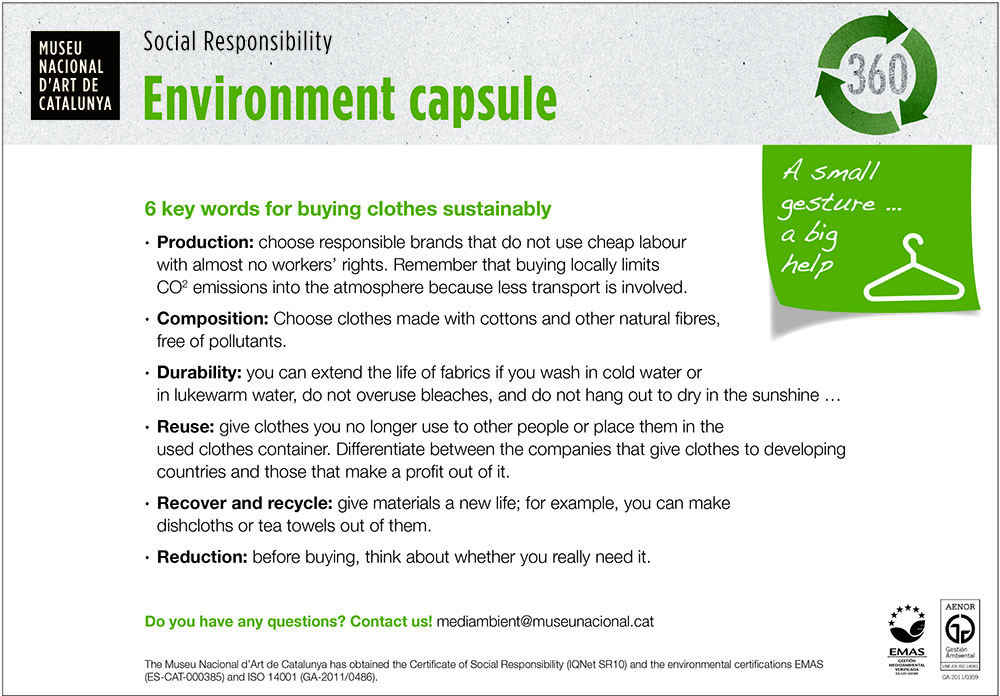As an entity responsible for the conservation of the heritage, the museum is also committed to working for a better society through its environmental policy. In line with the Social Responsibility Policy (pdf) and a code of ethics (pdf), at the museum we have incorporated management policies and systems in the economic, social and environmental spheres.
We have therefore introduced an Environmental Management System that enables us to function with the greatest respect for our surroundings and to minimize our impact on the environment.
In this respect, the Environmental Declaration 2015 includes the museum’s diagnosis and annual plan of action, in accordance with ISO regulation 14.001, obtained in July 2011, and European Regulation EMAS, a certificate obtained in January 2012.
In the illustrations you can see some of the environment capsules that we have circulated internally for the whole museum staff. Many of these recommendations may be useful for other organizations and for the home.
Click on the images to enlarge text:
Good environmental practices
We are the first cultural entity in Catalonia to have put into practice an environmental awareness plan in matters of waste. We work on the basis of a Waste Management Manual, for internal use, whose priority is the reduction, reuse and recycling of waste in all areas, and the principles of the Environmental Declaration, which are based on environmental awareness-raising, the prevention of pollution and continual improvement:
- Establishing a process of continual improvement of environmental management with the necessary provision of resources.
- Familiarizing ourselves and complying with the regulations and the present and future legal requirements, and any others to which the organization may subscribe.
- Informing, training and raising the awareness of the staff to incorporate the criteria of sustainability in all activities.
- Disseminating and fomenting, among suppliers, collaborators and the public, the museum’s environmental policies.
- Efficiently using natural resources, raw materials and energy, and encouraging waste reduction, reuse and recycling to prevent pollution.
How can you make a personal commitment to the environment?
- Segregation: paper should be placed unfolded in the containers in order to optimize the space and the transport costs. Do not throw in bits of paper that are plastified or dirty with organic substances, staples, paperclips or aluminium.
- Air conditioning: doors and windows should be kept closed when the air conditioning is on and the thermostat regulated to 20° C in winter and 25° C in summer.
- Computer equipment: Computer screens must be switched off when not in use and computers too at the end of the working day. Connecting image-reproducing equipment (photocopiers, printers, etc.) together in a network reduces the number of them and makes them more efficient.
- Energy: unplug devices, use energy-efficient light bulbs and put the lights on only when necessary.
- Reduce, reuse and recycle: the minimization of waste should be encouraged by reusing things that are in a good condition and avoiding disposable products. Once waste has been produced, it should be separated for recycling: this will give it a new value.
- Buy green: buy products that do not contain toxic substances and pollutants, such as volatile organic compounds or phosphates. Use only what you need and according to what the manufacturers recommend, and clean clothes and dishes at low temperatures with appliances fully loaded. This way waste and the consumption of natural resources are kept to a minimum, and we work to keep ourselves and the environment healthy.
- Share your car: sharing the car with other members of staff helps to reduce expenses and pollution.
A small gesture … a big help!
Related links
Quorum: The National Art Museum of Catalunya and Corporate Social Responsibility
A museum more ecological and more economic: new installations in Modern Art

